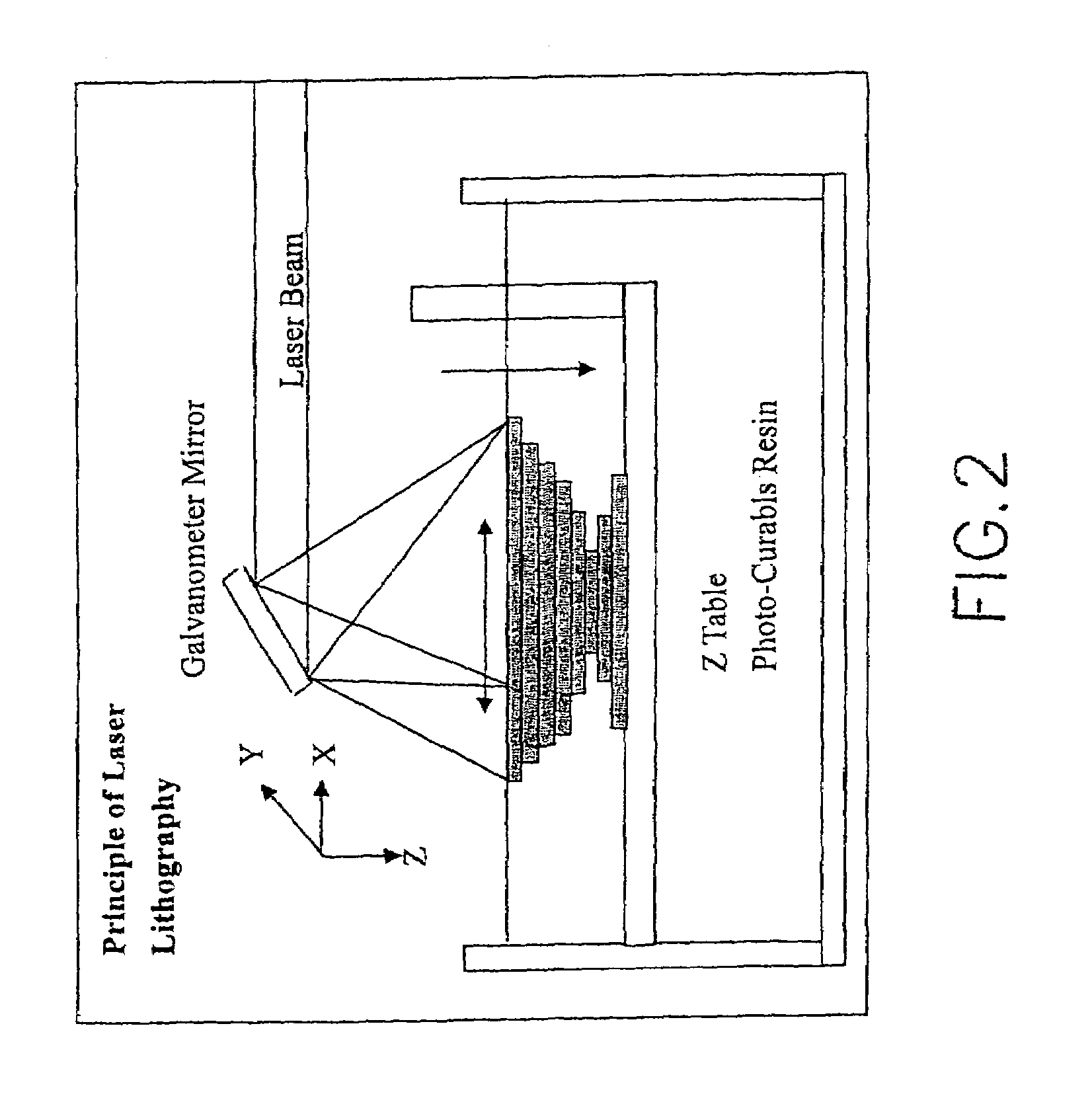Method for rapid prototyping by using linear light as sources
a linear light and rapid prototyping technology, applied in the direction of additive manufacturing processes, instruments, manufacturing tools, etc., can solve the problems of flaying dust, high material cost, and lack of precision, and achieve the effect of reducing the cost of materials
- Summary
- Abstract
- Description
- Claims
- Application Information
AI Technical Summary
Benefits of technology
Problems solved by technology
Method used
Image
Examples
first embodiment
[0065]As shown in FIG. 10, the method of rapid prototyping of the present invention includes the following steps;
[0066](1) rolling raw material onto a defined zone;
[0067](2) illuminating the raw materials cause a first time of physical or chemical changes;
[0068](3) using more powerful linear light source with cooperation of portable Digital Micromirror Device (DMD) to scan the selected zones of the material to cause a second time of physical or chemical changes;
[0069](4) repeating pre-set times of the step (1) to (3) and establishing connection between layers of the 2-D images;
[0070](5) removing the raw material from the object with the second time of change so as to obtain a solid work piece.
second embodiment
[0071]As shown in FIG. 11, the method of rapid prototyping of the present invention includes the following steps;
[0072](1) rolling raw material onto a defined zone;
[0073](2) illuminating the raw materials by electronic beams to cause a first time of physical or chemical changes;
[0074](3) using more powerful linear light source with cooperation of portable Digital Micromirror Device (DMD) to scan the selected zones of the material to cause a second time of physical or chemical changes;
[0075](4) repeating pre-set times of the step (1) to (3) and establishing connection between layers of the 2-D images;
[0076](5) removing the raw material from the object with the second time of change so as to obtain a solid work piece.
third embodiment
[0077]As shown in FIG. 12, the method of rapid prototyping of the present invention includes the following steps;
[0078](1) rolling raw material onto a defined zone;
[0079](2) heating the raw materials to cause a first time of physical or chemical changes;
[0080](3) using more powerful linear light source with cooperation of portable Digital Micromirror Device (DMD) to scan the selected zones of the material to cause a second time of physical or chemical changes;
[0081](4) repeating pre-set times of the step (1) to (3) and establishing connection between layers of the 2-D images;
[0082](5) removing the raw material from the object with the second time of change so as to obtain a solid work piece.
PUM
| Property | Measurement | Unit |
|---|---|---|
| energy | aaaaa | aaaaa |
| size | aaaaa | aaaaa |
| surface tension | aaaaa | aaaaa |
Abstract
Description
Claims
Application Information
 Login to View More
Login to View More - R&D
- Intellectual Property
- Life Sciences
- Materials
- Tech Scout
- Unparalleled Data Quality
- Higher Quality Content
- 60% Fewer Hallucinations
Browse by: Latest US Patents, China's latest patents, Technical Efficacy Thesaurus, Application Domain, Technology Topic, Popular Technical Reports.
© 2025 PatSnap. All rights reserved.Legal|Privacy policy|Modern Slavery Act Transparency Statement|Sitemap|About US| Contact US: help@patsnap.com



